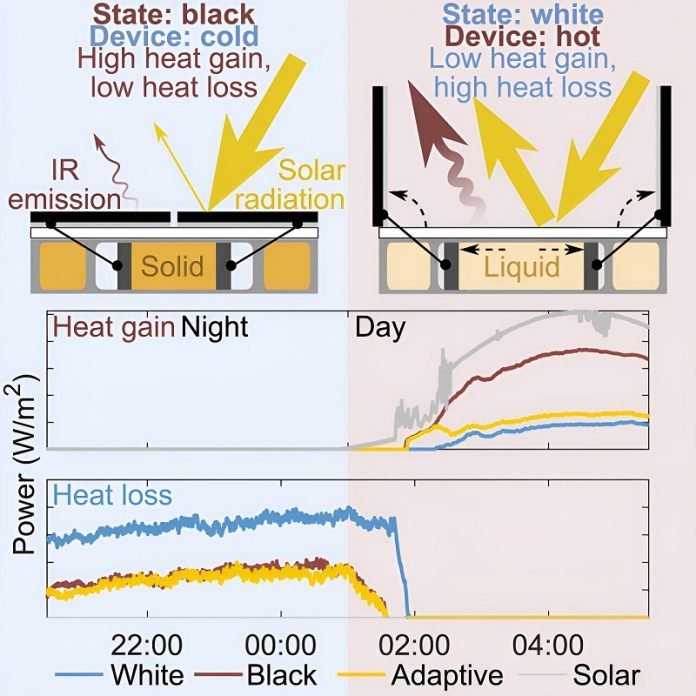
Heating and cooling our homes takes up a lot of energy, often leading to high bills and environmental strain.
But researchers at UC Santa Barbara – Charlie Xiao, Elliot Hawkes, and Bolin Liao – are developing something that could change all that: an intelligent roof tile.
This isn’t your average tile; it’s designed to cut down both heating and cooling costs significantly, and it does this in a pretty clever way.
Their invention, detailed in the journal Device, is an adaptive tile that automatically adjusts to the weather.
When it’s cold, the tile helps to warm your house, and when it’s hot, it keeps things cooler, all without using any electronic gadgets.
The magic of this tile lies in its ability to switch between heating and cooling modes by itself, depending on the temperature. The ideal switching point is around 65° F (18° C).
This balance is achieved through a unique combination of thermal science and clever design – something the researchers brainstormed during long drives between Santa Barbara and northern California.
The critical component of this tile is a wax motor. This might sound high-tech, but wax motors are found in everyday appliances like dishwashers.
The wax motor works in the tile based on how wax changes volume with temperature. When the temperature changes, the wax inside the engine expands or contracts, and this movement opens or closes parts of the tile.
Here’s how it works: When the wax is solid in cooler weather, parts of the tile called louvers stay closed and flat.
This makes the tile absorb sunlight and keep heat from escaping. But when it gets warmer, around 18° C, the wax melts and expands. This opens the louvers, revealing a surface that reflects sunlight and lets out heat.
Another cool thing about the wax is that it absorbs or releases a lot of heat when it melts or freezes. This helps to stabilize the temperature of both the tile and your house even more.
Testing this tile showed some impressive results. It could reduce the need for cooling by more than three times and heating by over two times compared to standard tiles. Plus, it doesn’t need any external power, batteries, or electronics to work.
This simplicity also means the tile can be easily customized for different climates using different wax types and thermal coatings. It’s also well-suited for mass production.
Right now, this smart roof tile is still in the early stages, but the team at UC Santa Barbara hopes it will lead to new technologies that can help reduce energy use in buildings.
If successful, these tiles could make a big difference in how we heat and cool our homes, saving us money and helping the environment.



